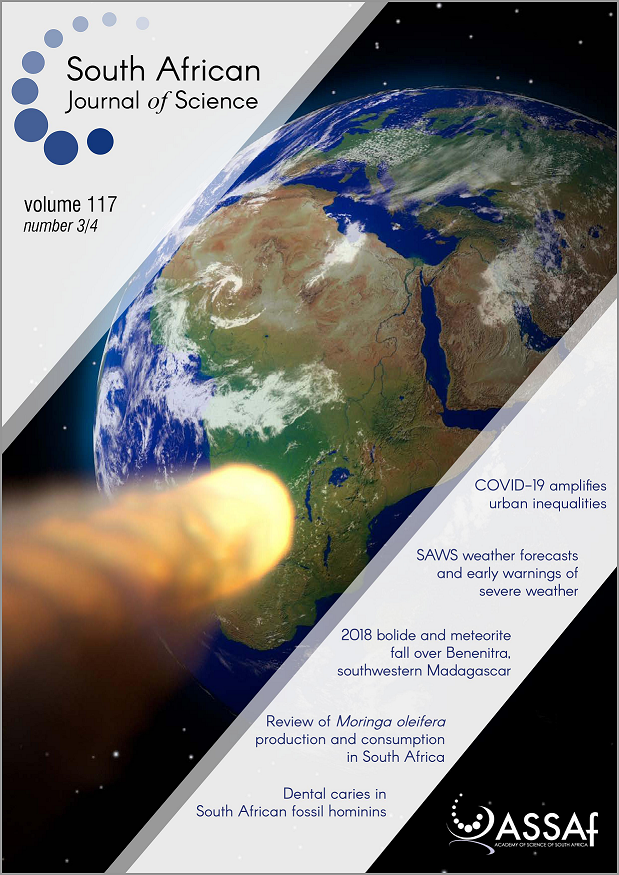New AMS dates for the Middle Iron Age in the Mapungubwe landscape
DOI:
https://doi.org/10.17159/sajs.2021/8980Keywords:
abandonment, droughts, ethnic interaction, Mapungubwe landscape, population dynamicsAbstract
Research in the Limpopo Valley has documented over 500 Middle Iron Age sites (AD 900–1320) relevant to the origins of Mapungubwe – the capital of the first indigenous state in southern Africa. Fifteen new accelerator mass spectrometry (AMS) dates from 11 of these archaeological sites establish the boundaries of the ceramic facies that form the culture-history framework for such diverse topics as land use, ethnic stratification, population dynamics and rainfall fluctuations. Mapungubwe was abandoned at about AD 1320.
Significance:
- Because Mapungubwe developed relatively recently (circa AD 1200), it can clarify the origins of older states.
- Environmental factors such as droughts, along with agriculture and trade, played a role in the abandonment of Mapungubwe.
Published
Issue
Section
License

All articles are published under a Creative Commons Attribution 4.0 International Licence
Copyright is retained by the authors. Readers are welcome to reproduce, share and adapt the content without permission provided the source is attributed.
Disclaimer: The publisher and editors accept no responsibility for statements made by the authors
How to Cite
- Abstract 558
- PDF 586
- EPUB 138
- XML 162
Funding data
-
University of the Witwatersrand, Johannesburg
Grant numbers UFF013 -
National Research Foundation
Grant numbers 85983












.png)